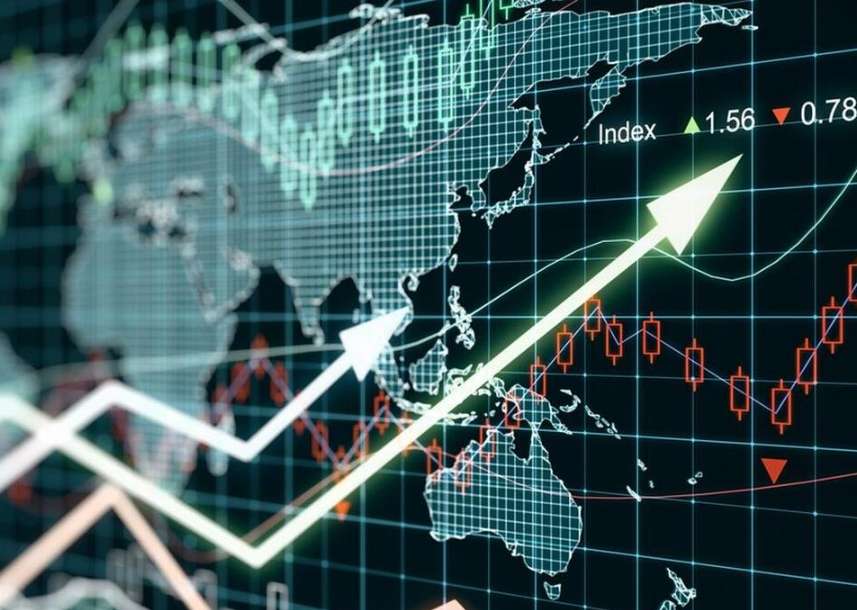Should You Time the Market?
Advertisements
In the world of investing, the concepts of "picking tops" and "bottom fishing" have long been both revered and vilified by market players. These strategies invoke a sense of adventure, akin to a high-stakes game, where timing can make or break one's financial future. Among traders, it is often said that the highest and lowest points in the market are the most expensive places to enter. Many retail investors find themselves caught in a relentless pursuit of these elusive peaks and troughs, leading to a cycle of frustration and occasional triumph.
It's crucial to recognize that the futures market, inherently leveraged and reliant on precision, requires a mindset unyielding to the fear of failure. To shy away from exploring these strategies—despite their inherent risk—is to forfeit the opportunity for substantial returns. The inquiry then becomes: can one truly differentiate between a 'top' and a 'bottom' in a landscape fraught with uncertainties? Strategies must evolve beyond mere guessing and rely instead on indicators that suggest extreme pricing, a clear directional trend, and the right timing.
The term "extreme price" often resonates with seasoned traders who understand that identifying such conditions is essential. For industrial goods, cash flow cost serves as a foundational touchstone of extreme pricing levels. Above this threshold, production remains sustainable, albeit potentially at a loss; however, when prices fall beneath this mark, supply will swiftly contract as manufacturers cut back on output to mitigate losses. A historical example illustrates this: during the Great Depression, the price of milk plummeted, leading to widespread disposal of product not simply due to lack of demand, but as the cost of production outweighed potential sales, prompting dairy farmers to halt supply.
Yet, the difficulty lies in determining high price levels, which are often opaque. While the bottom of the pricing curve is easier to identify, the top can elude even the most seasoned analysts. Scarcity can drive prices ever upward, providing no tangible ceiling. This complexity demands diligent observation of commodity substitutes; in instances where alternatives are readily available, their market prices can serve as a helpful reference. For instance, if vegetable oil is suddenly in acute shortage while soybean oil stocks are flourishing, the former is unlikely to spike excessively due to availability of a cheaper alternative.
Moreover, the supply cycle of specific goods also plays a critical role. The agricultural sector, characterized by seasonal harvest cycles, sees much slower adjustments in supply compared to industrial commodities where shifts can occur much more fluidly. For example, chicken production can ramp up relatively quickly, whereas pork production requires significant time and investment, thus creating different market dynamics under fluctuating supply conditions.

Identifying a "certain direction" in the market is another pivotal element in the decision-making process. Certain products have predictable demand trajectories, making them less volatile. When evaluating garlic prices, traders noted a significant price drop, but foresaw a resurgence as consumer demand remained. Conversely, other sectors like steel exhibit dual uncertainty—both supply and demand can contract simultaneously, leading to unpredictable outcomes; illustrating that even steep declines in price do not always correlate to a necessarily favorable environment for recovery.
Timing is essential when considering entry points in the market. A trader like Richard Dennis, known for the Turtle Trading Method, firmly believed in moving with the current of least resistance; hence, understanding the market rhythm is vital. Recognizing signs of fatigue, including failed price rebounds, plays a critical role in determining one's entry strategy. In the case of swift upward movements in prices, falling for the allure of immediate gains can lead to premature conclusions, as market conditions are continuously evolving—a reflection of its complex ecosystem.
A particularly precarious situation arises with extreme pricing, which can act as a catalyst stirring the waters of market imbalance. These moments—akin to throwing a boulder into a calm lake—can rapidly intensify market dynamics, forcing both bullish and bearish investors to confront the reality of their positions more sharply. The failings to account for the ripple effects of such volatility can lead to significant financial missteps.
For investors, a steadfast rule remains: navigate the market only once enough time has allowed for the various dynamics—be they bullish or bearish—to achieve a state of equilibrium revealing clearer trends. Alternatively, consider entering the market when pricing approaches limits based on historical data and valuation metrics. Picking tops or bottoms can prove catastrophic without adherence to these principles, akin to venturing into a tempestuous sea blindfolded, seldom ending in favorable outcomes.
Ultimately, the art of identifying tops and bottoms is not a gamble rooted in chance, but a calculated methodology shaped by extensive research and incisive market understanding. It demands patience, cautious analysis, and a keen awareness of the multifaceted factors influencing market behaviors, including industry trends and company fundamentals. Only through this diligent approach can one capitalize on unique opportunities to effectively engage in top picking and bottom fishing, maximizing investment returns while traversing the intricate realm of financial markets.
Post Comment